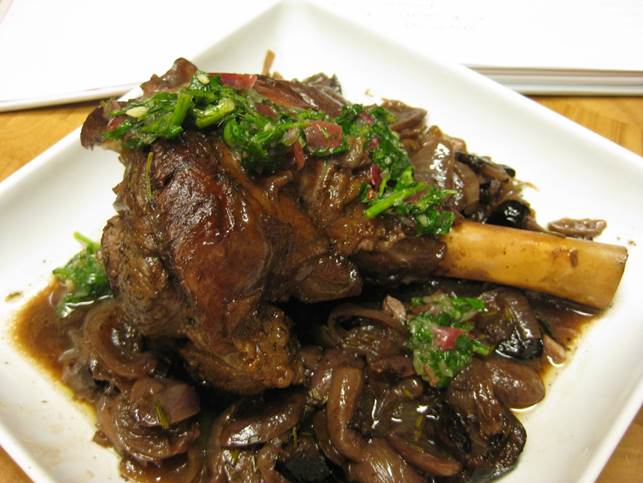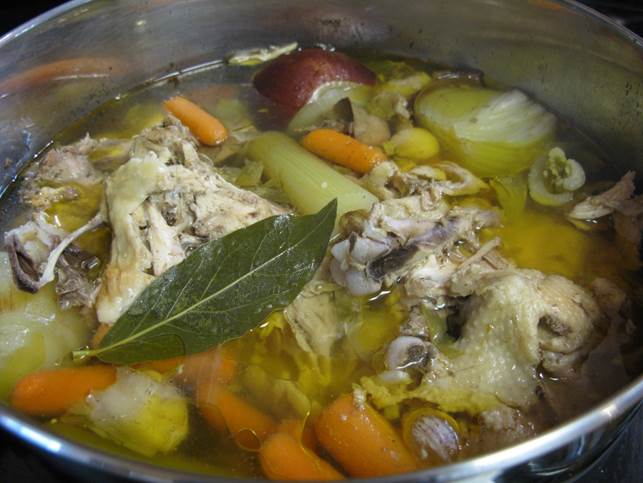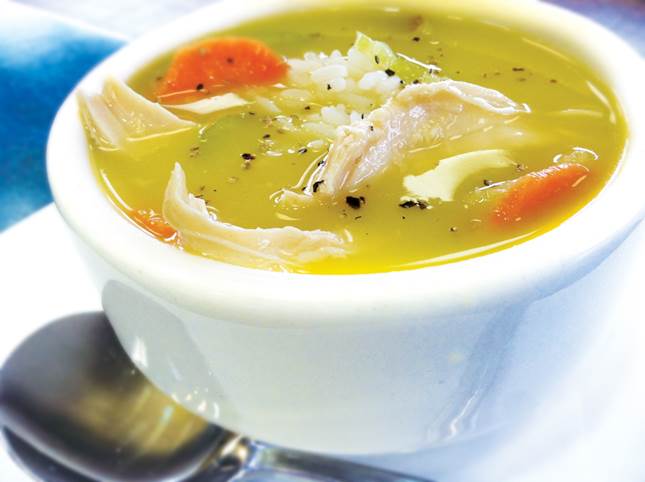Lamb shanks and chicken soup are more than just warming
winter comfort foods, they come with some surprising health benefits, too.
Nutritionist Kate Skinner looks at the upside of cooking with bones.

. These foods offer health benefits far beyond
winter warmth and the ability to conjure fond childhood memories
The traditional use of nourishing folk
dishes like broths, soups, rich gravies, hearty stews and slow braises predates
our knowledge of the science to their wisdom, but it turns out the nonnas,
yiayias and grand-mères around the world had it right all along. These foods
offer health benefits far beyond winter warmth and the ability to conjure fond
childhood memories.
Bones for your bones and joints for your joints

“Good broth will resurrect the dead”
According to an old South American proverb,
“good broth will resurrect the dead”, in reference to the magic that happens
when you add a little vinegar or lemon juice to bones and water and simmer for
a couple of hours. The essential minerals, calcium, magnesium and silicon,
needed for building and maintaining strong, healthy bones, are drawn out by the
acid, low heat and slow-cooking process, resulting in a broth full of nutrients
that the body can easily absorb. You can also reap the same benefits from wintry
meals made using bone-in cuts of meat slow-cooked in liquid – think pork
knuckle, beef shin lamb shanks or oxtail braised on the bone. Slow cooking
extracts the goodness out of animal joints, tendons and cartilage – things like
glucosamine and chondroitin, which you might recognise as ingredients on
arthritis and joint supplements at the chemist. Tucking into that osso buco is
a tasty way to boost joint health.
Surprising benefits of gelatine
The nose-to-tail movement is gaining
momentum and historically prized parts of the animal – shin, cheek, brisket,
knuckle and tail – are becoming commonplace in the home kitchen. Secondary cuts
do require a little more TLC, but offer a wealth of benefits that your average
chicken breast or beef mince just can’t deliver. They’re rich in gelatine, a
protein derived from collagen, which is the stuff women (and men) pay big bucks
for in their quest for youthful-looking skin. Gelatine is one of the few protein
sources containing nutrients that give our skin, hair and nails its structure,
tone, elasticity and resilience, while also having an antioxidant effect on the
body. Gelatine isn’t just great for your skin, it has traditionally been used
as a therapy for a wide variety of ailments and shown to promote immune health,
heal wounds, soothe the symptoms of irritable bowel syndrome and reduce general
inflammation. Components have also been demonstrated to promote good sleeping
patterns, so a lovely slow-cooked, gelatine-rich stew may also help you get a
sound night’s sleep.
The science of soup
Chicken soup has long been said to fight
the symptoms of the common cold. And in a recent American study, a scientist
conducted tests to show his wife’s chicken soup recipe handed down by her
Lithuanian grandmother had more than a placebo effect. The research, isn’t
totally conclusive, as it’s hard to pinpoint exactly where credit is due – with
the mineral-rich stock made from bones and cartilage, the anti-inflammatory
effects of gelatine drawn out from the carcass, the soothing qualities of a
warm, spice-laden liquid or quite possibly a combination of all these things –
but at the very least, homemade soup made from good-quality ingredients seems
firmly entrenched in our repertoire of home remedies for valid reasons.
Practical tips and tricks

It’s a good sign if the broth, once cooled, turns
jelly-like in consistency – proof that you’ve extracted the valuable nutrients
from the bone and connective tissues
Basic bone broth calls for a dash of
vinegar or citrus like lemon juice, a good pinch of salt, plenty of liquid, and
of course, bones – ask your butcher for soup bones, whole chicken carcasses,
backs and wing tips, or save leftover bones after a roast. The same principles
can be applied to slow-cooking gelatinous cuts of meat. Brown the meat first to
enhance flavour, then add liquid, seasoning and any vegetables. Chicken or fish
bones require less cooking time, while beef, lamb and veal bones are best left
for longer. It’s a good sign if the broth, once cooled, turns jelly-like in
consistency – proof that you’ve extracted the valuable nutrients from the bone
and connective tissues.
Fast facts
·
Calcium, magnesium and silicon – essential
minerals needed for strong, healthy bones – are drawn out of bones and bone-in
cuts of meat, such as knuckle, shanks and oxtail when cooked slowly with a
touch of acid such as vinegar or lemon juice.
·
Secondary cuts such as brisket and shin are rich
in gelatine, a protein derived from collagen, which has many benefits for joint,
skin and immune health.
·
Ask your butcher for soup bones or keep leftover
bones from roasts to make nutritious stocks and gravies.